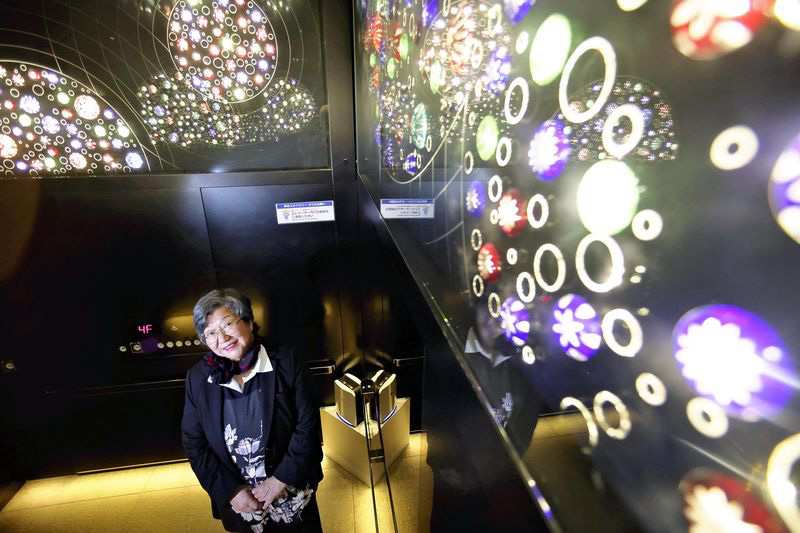
Michiyo Shimizu surveys Edo-kiriko glassware decorations on the walls of an elevator at Tokyo Skytree, shown on right at night, in Sumida Ward, Tokyo.
10:40 JST, February 24, 2022
Tokyo Skytree, one of the capital’s most famous landmarks, will mark its 10th birthday on May 22. Over the past decade, the 634-meter-high structure in Sumida Ward, Tokyo has proved a hit with visitors, welcoming sightseers from home and abroad. Even when it was forced to close temporarily due to the coronavirus pandemic, its resplendent illuminations continued to soothe people’s hearts. The Skytree’s appeal can perhaps best be understood by talking with people whose work is related to the building.
Four different elevators whisk patrons to the Skytree’s observation deck 350 meters above ground. Each elevator depicts the sky during a different season. When the door closes and the elevator starts to ascend, it becomes dim inside the car. Visitors can’t choose which elevator to use, but if you find yourself in the elevator that represents summer, you’ll experience beautiful cut-glass patterns in navy, red and green, flickering delightfully across the car walls. The eye is quickly beguiled by this glittering decor, which was created using traditional Japanese craftsmanship.
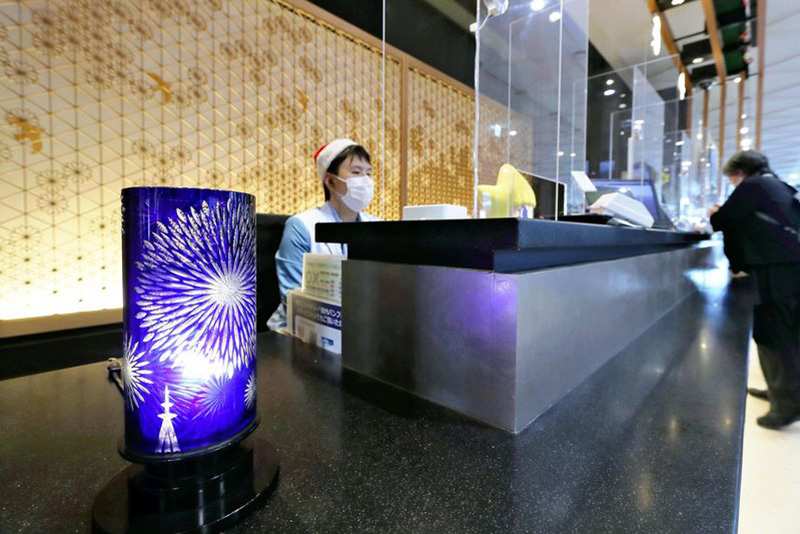
An Edo-kiriko glassware object is seen on a ticket counter at Tokyo Skytree.
The patterns were designed to symbolize summer fireworks bursting into life in the night sky over Sumida River. Each pattern was created using techniques associated with Edo-kiriko, a traditional glassware craft that originated during the Edo period (1603-1867). The patterns were designed by Shimizu Glass Co., an Edo-kiriko workshop in Katsushika Ward, Tokyo.
Recalling the days when she struggled to keep her business going, the company’s 68-year-old president, Michiyo Shimizu, exudes a quiet pride in being involved with the elevator decorations. Shimizu Glass was founded in 1923. In 1991, Kojiro Shimizu was set to become the third-generation president, but died at the age of 39. His father — second-generation president Kazumi Shimizu — died three years later at age 73. It was under these circumstances that Michiyo Shimizu — Kojiro’s wife — unexpectedly became the company’s third president during the recession caused by the burst of the bubble economy.
At that time, luxury cut-glass items like Edo-kiriko did not sell well. Things took a further turn for the worse as progress made in the field of mechanized abrasive processing led the industry to adopt a reduced-price policy. In 2009, Shimizu Glass lost a major client that had used the company to process cut glass. “I used to sigh a lot when looking at the books as payday approached,” Shimizu says.
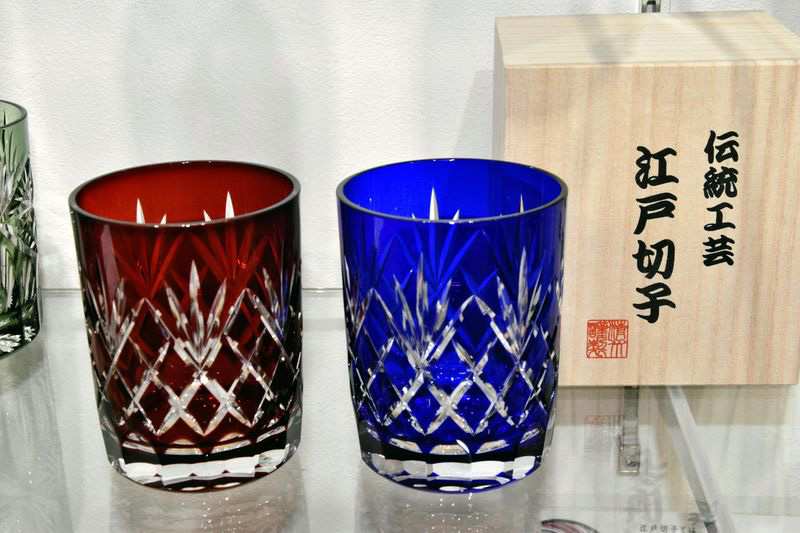
Edo-kiriko glasses produced by Shimizu Glass Co.
Looking to the future
According to the Edo Kiriko Cooperative Association, Edo-kiriko likely originated in 1834 when Kagaya Kyubei, a glasswork artisan based in Edo, the old name for Tokyo, sculpted a glass surface using emery powders. Edo-kiriko developed further from the Meiji era (1868-1912) when it began incorporating cut glass-related techniques from Europe. Today, Edo-kiriko glassware is mostly produced in Tokyo’s old towns, and was designated a Japanese traditional craft in 2002. However, the number of workshops affiliated with the association decreased from 176 in 1963 to 51 in 2021.
Shimizu was determined to keep her firm alive, even as a raft of fellow Edo-kiriko companies closed down around her. Shimizu says she was worried about setting the firm’s workers adrift when they had no other marketable skills. However, she managed to continue trading after landing a number of jobs from acquaintances, and things started to look up in September 2010. An interior decorator for Tokyo Skytree told Shimizu he had been looking for Edo-kiriko craftspeople. Shimizu could see the under-construction skyscraper from her company base.
The interior decorator asked the company to produce glassware to adorn the walls inside an elevator. It was the first time for the Edo-kiriko glassware firm to work on an interior decoration project. The company’s craftspeople used abrasive tools and engraved beautiful flower patterns on round glass discs with diameters ranging in size from about 4 centimeters to 10 centimeters. Even though they thought the discs were finished, they had to repeatedly redo the work due to unevenness that occurred when the discs were embedded in the walls. Sometimes the designer was dissatisfied with their work, saying things like, “Can’t you come up with a darker shade?”
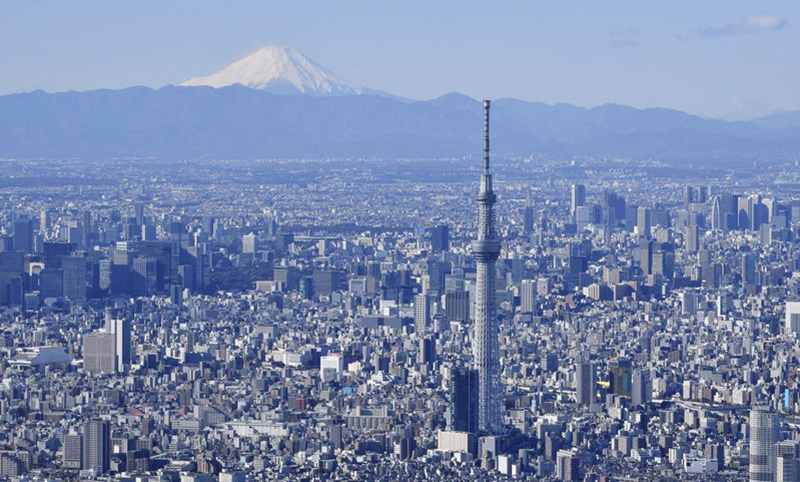
An aerial view of Tokyo Skytree with Mt. Fuji taken on Dec. 18, 2021
The firm made more than 370 glass ornaments for the elevator, and made delivery in April 2012, a month before the Skytree’s opening. Shimizu says she felt overwhelmed when she rode the elevator during a preview, thinking “I didn’t know Edo-kiriko could be this beautiful.”
Word quickly spread about the glassware-decorated elevator, resulting in wide recognition of Shimizu Glass’ artistry. The company was subsequently commissioned to make wall ornaments for Gransta Tokyo, a shopping facility inside JR Tokyo Station that opened in 2020.
The Tokyo metropolitan government designated Shimizu Glass factory head Ryuzo Mita, 88, as a Tokyo Meister — a title given to artisans and craftspeople with superlative skills — for his highly rated work on the Tokyo Skytree elevator and other facilities.
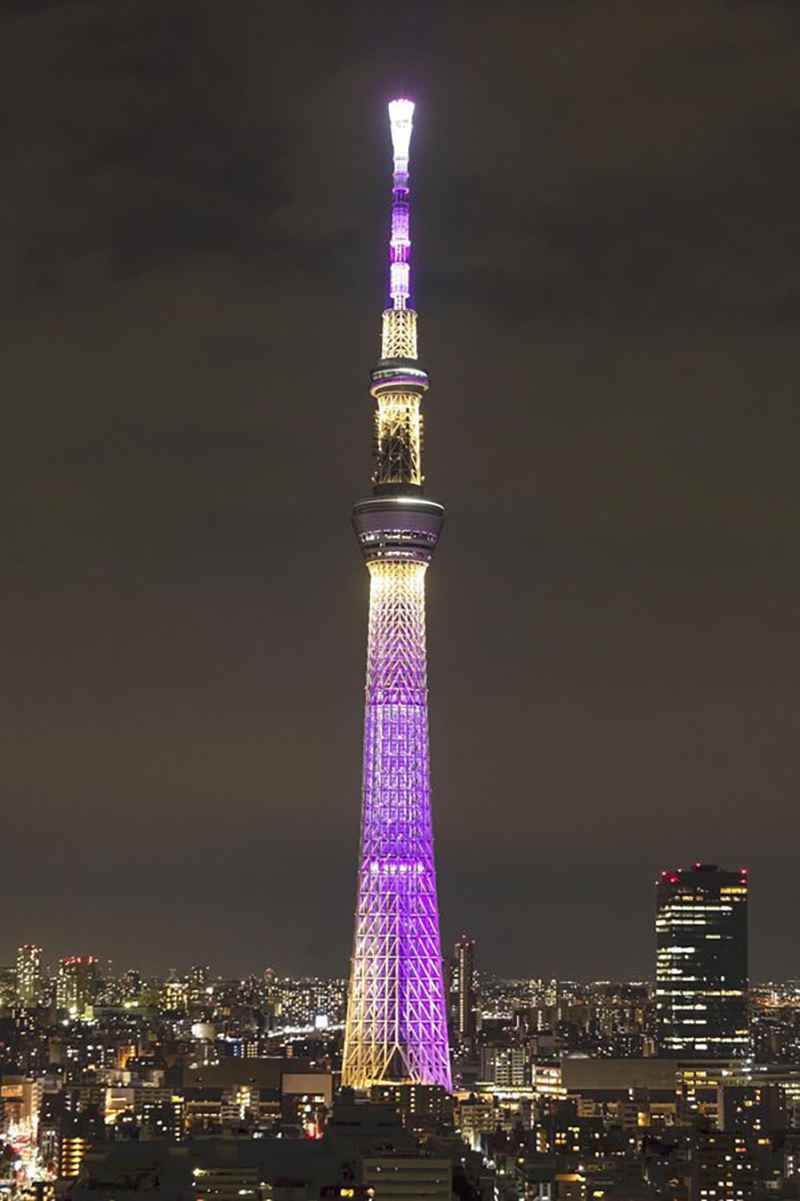
Tokyo Skytree is seen during night time.
The company has also played a role in nurturing new craftspeople by passing on the skills of experienced masters. Soon after being employed by the company, Yayoi Aoyama, 38, helped create ornaments for the Skytree elevator and began to learn about abrasive operations for glass. Aoyama subsequently become an established craftsperson, and won a prize at a famous traditional craft exhibition.
Due to the impact of the pandemic, the company currently receives fewer orders from hotels and restaurants for cut glass tableware. However, Shimizu refuses to be pessimistic. “Skytree opened up more possibilities for Edo-kiriko,” she says. “We’ll continue to take on challenges in the future.”
"Society" POPULAR ARTICLE
-

M4.9 Earthquake Hits Tokyo, Neighboring Prefectures
-

M7.5 Earthquake Hits Northern Japan; Tsunami Waves Observed in Hokkaido, Aomori and Iwate Prefectures
-

Israeli Tourists Refused Accommodation at Hotel in Japan’s Nagano Pref., Prompting Protest by Israeli Embassy and Probe by Prefecture
-

Tsukiji Market Urges Tourists to Avoid Visiting in Year-End
-
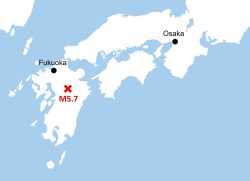
M5.7 Earthquake Hits Japan’s Kumamoto Pref., Measuring Upper 5 Intensity, No Tsunami Expected
JN ACCESS RANKING
-

Keidanren Chairman Yoshinobu Tsutsui Visits Kashiwazaki-Kariwa Nuclear Power Plant; Inspects New Emergency Safety System
-

Imports of Rare Earths from China Facing Delays, May Be Caused by Deterioration of Japan-China Relations
-

University of Tokyo Professor Discusses Japanese Economic Security in Interview Ahead of Forum
-

Japan Pulls out of Vietnam Nuclear Project, Complicating Hanoi’s Power Plans
-

Govt Aims to Expand NISA Program Lineup, Abolish Age Restriction

















